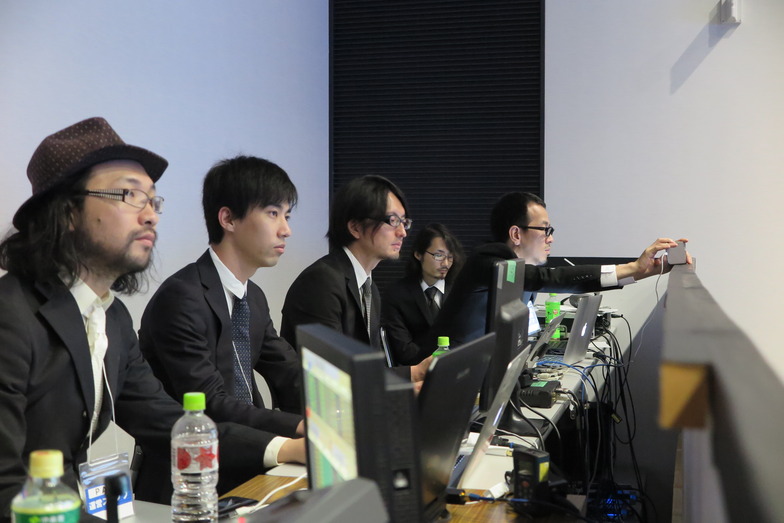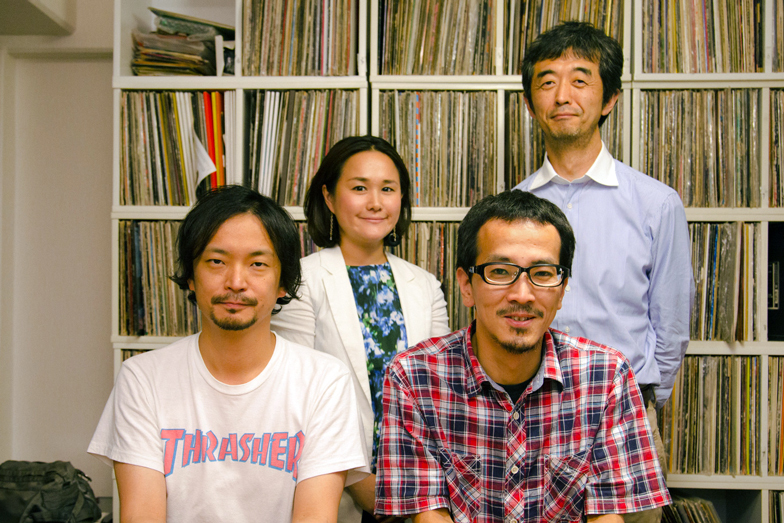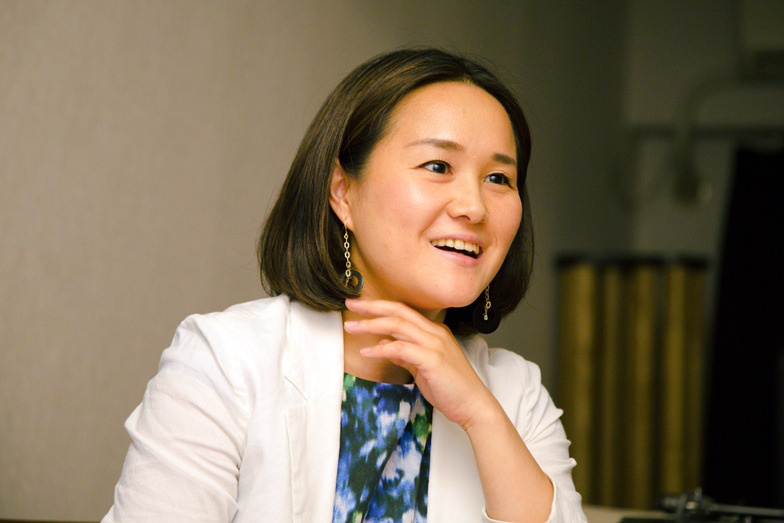Osamu Ishibashi: Due to time constraints, we couldn't just tackle each element one by one. As we progressed with both the direction and development simultaneously, we found that once development made progress, the direction became clearer and expanded, and vice versa. This created a situation where things didn't solidify easily.
What were the most challenging aspects?
Motoki Ishibashi: It might not be the best way to put it, but I knew that if we just focused intensely, we could shape it based on our past experience. Precisely because I knew that, I wanted to try a collaborative development approach and create a new way of working with Yaskawa Electric. Deciding where to draw the line on that was quite a struggle.

Stage adjustment in progress
Sekiguchi: What was the initial goal you were aiming for?
Motoki Ishibashi: It was about creating one completely new tool. Specifically, a robotic arm tool designed for performance or expression itself. I haven't given up on that idea now. I still believe such tools are necessary, and I think many people would agree that having them would absolutely expand the range of expression possible. I want to pursue that.
Sekiguchi: You couldn't do it without Yaskawa Electric's technical cooperation, right?
Motoki Ishibashi: Yes. Fundamentally, having a robot arm move exactly as it would in CG software isn't necessary for industrial robots right now. But if it existed, it would absolutely open up possibilities for future business, right?
Sekiguchi: In the broader trend, we should expect robots to program themselves directly in factories using CG, without human intervention.
Manabe: It's the issue often called the Singularity (※2), but it comes down to judging whether to invest the cost to develop it.
*Note 2: Singularity: The Technological Singularity refers to the precise and reliable limit of future models derived from the history of human technological development ("event horizon") in futurology.
Approach to Developing and Creating the Production Plan
Osamu Ishibashi: How did you decide on the direction?
Motoki Ishibashi: I felt we needed some kind of narrative element that would convey a sense of that 100-year timeline, starting from when Yaskawa Electric began. I wasn't sure if it would be conveyed through video or what form it would take, but I felt it was necessary to make the audience feel that 100 years. Also, since it was already decided that robots would be fixed in place on the lower stage, I felt the upper space needed some kind of staging to avoid feeling empty. We managed to combine everything nicely by using servo motors to suspend the Flying Cube from the ceiling. We decided that first, then moved on to figuring out the video projections, and finally had evala create the music for the production. That was the sequence.
Osamu Ishibashi: Regarding what movements to give the robots, I remember consulting with Yaskawa Electric's technical team. We discussed things like, "What about this movement?" or "Hmm, this one might take a bit of time." After that, the Rhizomatiks team refined the robot movements. Did MIKIKO then watch those movements and think, "Well, if the dancers did this kind of movement, that might be interesting," so it was a simultaneous process?
Motoki Ishibashi: MIKIKO-san had experience choreographing for robots before. She'd choreographed for five SoftBank Pepper units and for three robotic arms, so she already had a sense of the required speed and such.
Manabe: MIKIKO does this kind of work regularly, so I think she has a comprehensive view of the entire production. She treats the robots like people. She's also very skilled at creating interactions and the interplay between visuals and people.
Ishibashi Moto: The choreography comes first, then the robots are synchronized to it, and the video team creates the visuals based on that. This is something our team can do because we always work this way.
Ishibashi Osamu: So it's a skill honed through years of accumulated experience.

Control console during final rehearsal
Sekiguchi: Surprisingly, when the cube or other elements were unstable, we'd discuss things like, "Well, should we just track it with infrared?"
It's interesting because back in the day, the goal was to use infrared tracking in real-time to follow human movement, but this time we're using it more as a kind of backup.
Ishibashi Moto: We're using camera models we haven't tried before. This time, conditions like the distance to the stage being far or needing to capture the entire 10-meter width meant we had to change various equipment. It's not just backup; we're also developing new parts to fit those conditions.
If there's a future for this, I think a higher goal would be developing a camera system or projection system with more versatility, one that could be used for regular future shoots.

Adjusting the projection mapping
I want to teach programming, visual expression, and performance to children!
Osamu Ishibashi: You're holding workshops for kids during summer vacation, right?
Motoki Ishibashi: Yes, I will. Limited to middle and high school students.
Manabe: I've been thinking lately that teaching college students is too late. Kids around high school age who can program really can do it. It's easier to gather amazing high schoolers than amazing college students.
Motoki Ishibashi: In the workshop, we create performances. So people who can't program are totally okay (laughs).
Manabe: For dancers, maybe famous high school dancers will join. I think it's important to help them build connections. Amazing programmers, dancers, and video artists. I think high schoolers can create great works together. It's way better than half-hearted interactive expressions by working adults (laughs). We'll also have MIKIKO join as an instructor. Limited to 10 participants.
Ishibashi Osamu: Those 10 people are incredibly lucky!
<End>

















